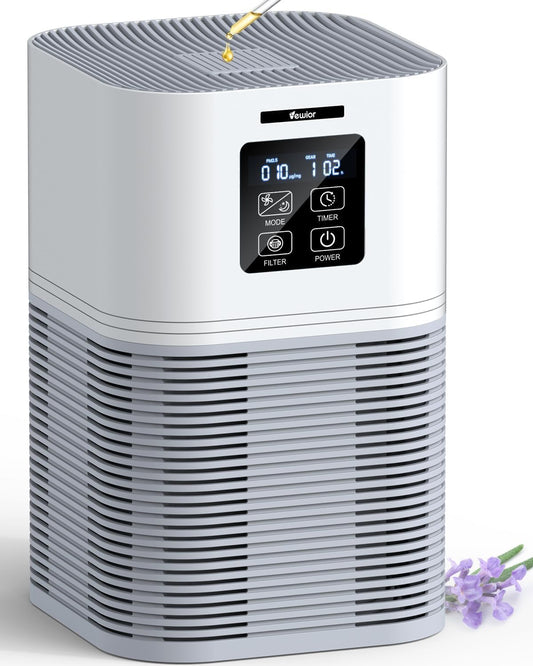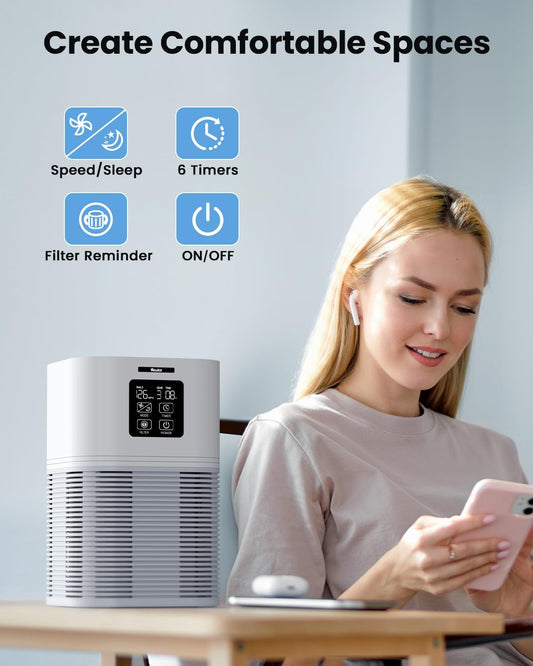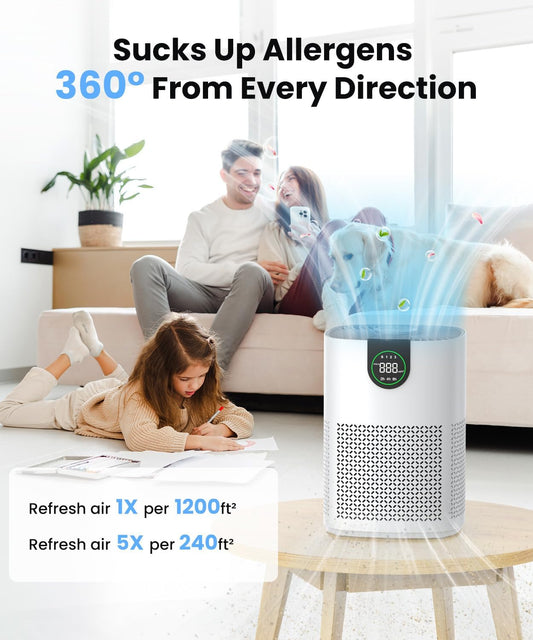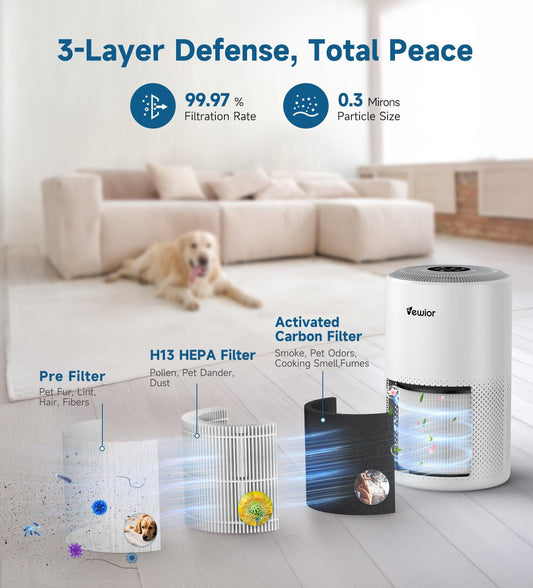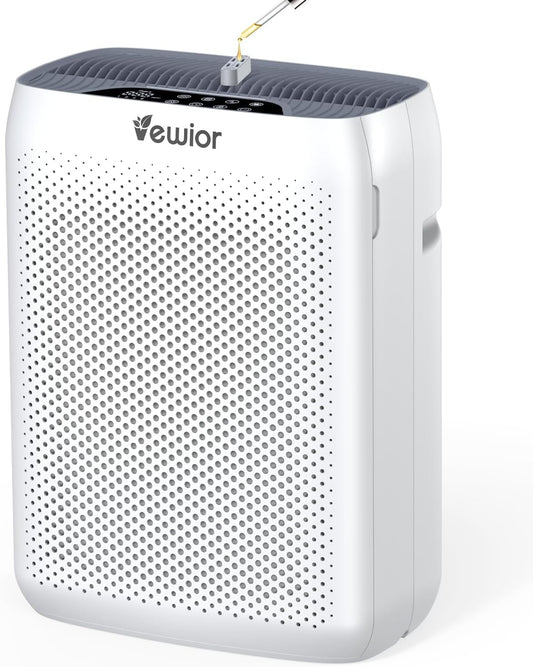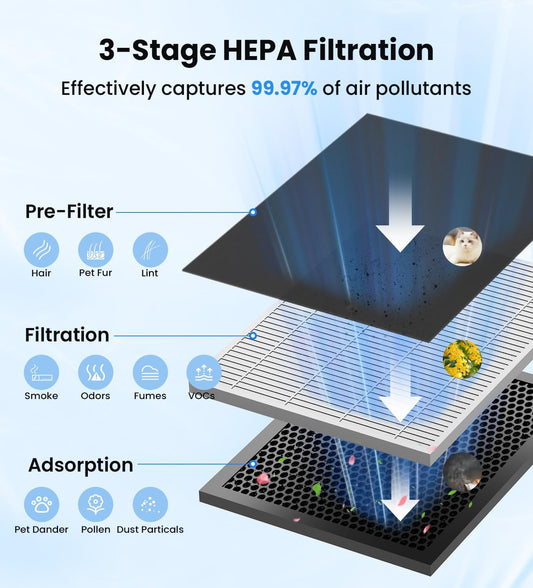In today's world, where air pollution is a growing concern, the importance of breathing clean, fresh air cannot be overstated. An air purifier is a device that has gained popularity as a practical solution to combat indoor air pollution. In this comprehensive guide, we will explore what an air purifier is, how it works, its benefits, and factors to consider when choosing one for your space. Let's delve deeper into the world of air purifiers and discover how they can contribute to a healthier indoor environment.
Understanding Air Purifiers
An air purifier is a device designed to remove contaminants and impurities from the air, such as dust, pollen, pet dander, mold spores, smoke particles, and volatile organic compounds (VOCs). It utilizes various technologies to achieve this, including mechanical filtration, activated carbon adsorption, UV germicidal irradiation, and ionization.
How Air Purifiers Work?
- Mechanical Filtration: One of the most common methods used in air purifiers is mechanical filtration. These devices employ filters made of materials like fiberglass, HEPA (High-Efficiency Particulate Air), or electrostatic materials to trap particles as air passes through them. HEPA filters, known for their high efficiency, can capture particles as small as 0.3 microns, effectively removing the majority of airborne pollutants.
- Activated Carbon Adsorption: Air purifiers with activated carbon filters are particularly effective in eliminating odors, gases, and volatile organic compounds. The porous nature of activated carbon allows it to adsorb these substances, trapping them within the filter.
- UV Germicidal Irradiation: Some air purifiers use ultraviolet (UV) light to disinfect the air. UV germicidal irradiation targets microorganisms, such as bacteria, viruses, and mold, by disrupting their DNA, rendering them inactive and unable to reproduce.
- Ionization: Ionizers release negative ions into the air, which attach to airborne particles, causing them to become heavier and fall out of the air. This process is known as electrostatic precipitation and helps remove allergens and other pollutants.
Benefits of Air Purifiers
Investing in an air purifier can bring numerous benefits to your indoor environment:
- Improved Indoor Air Quality: Air purifiers effectively remove harmful pollutants, allergens, and irritants from the air, enhancing the overall quality of the air you breathe. This can significantly benefit individuals with respiratory conditions, allergies, or weakened immune systems.
- Allergen Reduction: Air purifiers can help reduce allergens such as pollen, dust mites, pet dander, and mold spores, providing relief to allergy sufferers and creating a healthier living space.
- Odor Elimination: With activated carbon filters, air purifiers can remove unpleasant odors from cooking, pets, or smoke, leaving your home smelling fresh and clean.
- Asthma and Respiratory Symptom Relief: By removing asthma triggers like dust, pet dander, and pollen, air purifiers can help alleviate symptoms for asthma patients, leading to improved respiratory health.
- Smoke and Chemical Removal: Air purifiers equipped with specialized filters can effectively capture and reduce smoke particles and volatile organic compounds (VOCs), which are emitted by cleaning products, paints, and other household items.
Choosing the Right Air Purifier
When selecting an air purifier for your needs, several factors should be considered:
- Room Size: Determine the square footage of the room where you plan to use the air purifier. Choose a model with a recommended coverage area that matches or exceeds the size of the room to ensure optimal air purification.
- CADR (Clean Air Delivery Rate): Look for air purifiers with higher CADR ratings, as this indicates a faster and more efficient air cleaning process. CADR measures the device's ability to remove specific pollutants, such as smoke, pollen, and dust, within a certain timeframe.
- Filtration System: Consider the type of filtration system that best suits your needs. HEPA filters are highly effective for capturing small particles, while activated carbon filters are great for odor and chemical removal. Some air purifiers combine multiple filtration technologies for enhanced purification.
- Noise Level: If you plan to use the air purifier in a bedroom or workspace, consider the noise level of the device. Look for models with lower decibel ratings for quieter operation.
- Maintenance and Filter Replacement: Check the ease of maintenance and availability of replacement filters. Regular filter replacement is crucial for optimal performance, so ensure that the filters are easily accessible and reasonably priced.
- Energy Efficiency: Look for energy-efficient models that are ENERGY STAR certified. These devices consume less electricity, reducing both your environmental footprint and energy costs.
- Additional Features: Some air purifiers offer additional features such as air quality sensors, automatic mode adjustments, timers, and remote controls. Assess which features are essential for your specific requirements.
Conclusion
With the increasing concerns about indoor air pollution, investing in an air purifier is a proactive step towards creating a healthier living environment. Air purifiers efficiently remove contaminants, allergens, and odors from the air, contributing to improved indoor air quality and overall well-being. By understanding how air purifiers work, their benefits, and considering key factors when choosing one, you can make an informed decision and find the perfect air purifier for your space. Breathe easier, live healthier, and enjoy the benefits of clean, fresh air with an air purifier by your side.


